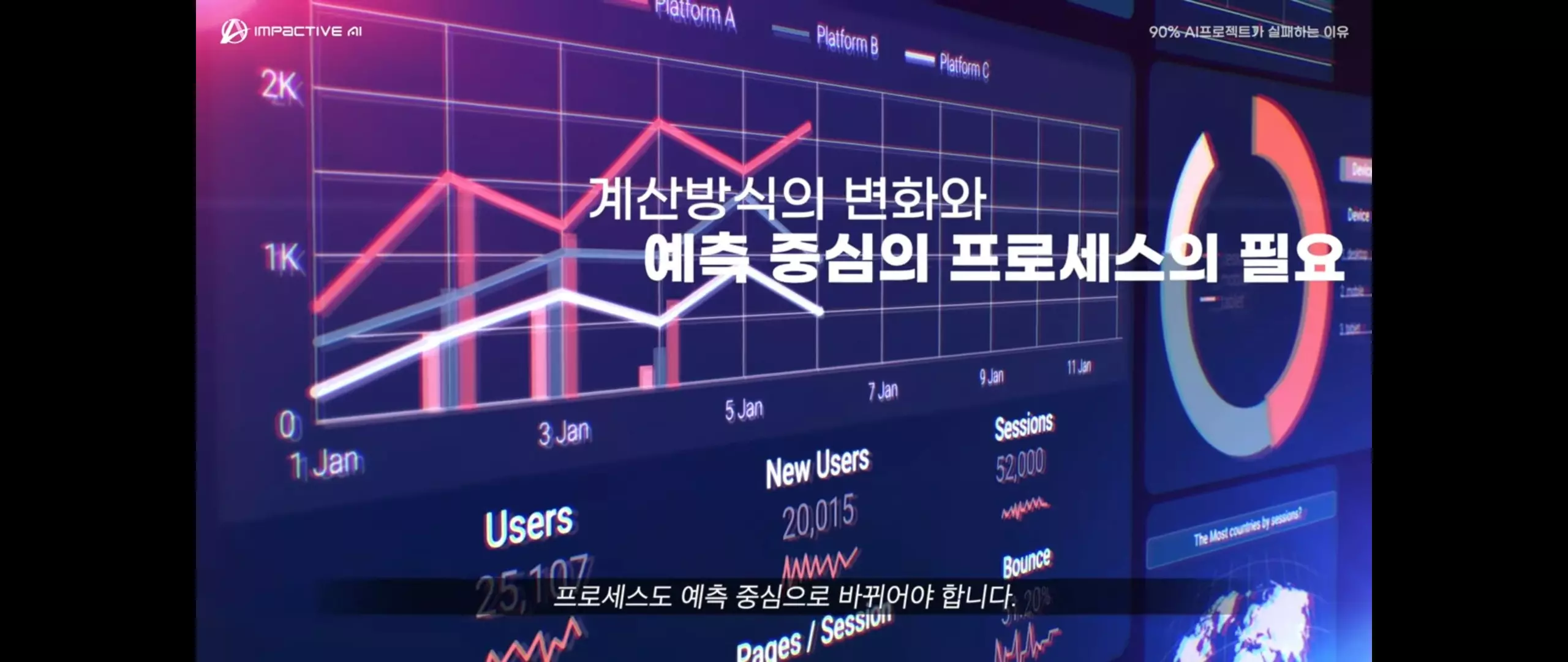What is an AI Agent? A comprehensive guide from definition to application

With the rapid development of artificial intelligence technology, AI is playing an increasingly important role in our daily lives. In particular, conversational AI systems such as ChatGPT are processing hundreds of millions of questions and answers a day worldwide, presenting a new paradigm called AI Agent.
These AI agents perform complex tasks autonomously, beyond simply generating responses, and are bringing about innovative changes to the work processes of companies and the daily lives of individuals.
The current scale of investment by global companies in AI agents exceeds $50 billion per year, and the market size is expected to reach $200 billion by 2025. This represents a paradigm shift across the industry, beyond simple technological innovation.
In particular, the introduction of AI agents in the areas of customer service, business automation, and data analysis is becoming a necessity rather than an option.
Technical foundation of AI agents
Sensor systems and environmental awareness

The sensor system of the AI agent uses various recognition technologies such as computer vision, speech recognition, and natural language processing in an integrated manner.
The basic foundation is made up of the latest transformer-based models such as the Vision Transformer (ViT) for image processing and the Conformer structure for speech recognition, and recently, the Multimodal Transformer (MMT) model has been introduced to process various types of input simultaneously through multimodal data.
Of particular note is its ability to extract features based on self-guided learning, which allows it to discover meaningful patterns even in unlabelled data.
In fact, the latest sensor systems process hundreds of gigabytes of multimodal data per second in real time, demonstrating a level of recognition similar to that of human sensory organs.
Central processing engine and decision-making system

The central processing engine acts as the brain of the AI agent, making decisions based on the information it has collected and determining the appropriate course of action. The core element is an inference system based on a large-scale language model, which uses hundreds of billions of parameters to solve complex problems and make decisions.
Of particular note is its ability to handle uncertainty, which combines Bayesian inference and Monte Carlo tree search to make optimal decisions even in situations with incomplete information.
Recently, its causal inference capability has been enhanced to identify causal relationships beyond simple correlations, enabling more reliable decision-making based on this.
Actuators and action execution systems
The actuator system is the core interface that translates the decisions of the AI agent into actual actions. It has evolved into an intelligent system that can control adaptive actions according to the situation, beyond simply executing commands.
A behavioural optimisation algorithm based on reinforcement learning forms the core, and it can detect changes in the environment in real time and adjust its behaviour accordingly.
In particular, it has recently adopted a meta reinforcement learning technique to enable it to quickly adapt to new environments. It has adopted a predictive control system to ensure the accuracy and stability of its actions, allowing it to simulate the results of actions in advance and select the optimal execution path.
Chatbot vs. AI Agent
From a rule-based reactive system to a learning system

Early AI agents were simple reactive systems that operated according to predefined rules. These systems generated immediate responses to inputs based on IF-THEN rules and were used in limited domains such as chess games or simple customer service.
The limitation of the rule-based system was that it was difficult to respond to unforeseen situations, but this became an important technical foundation for the development of modern AI agents.
In particular, the knowledge representation method and reasoning mechanism developed in expert systems had a great influence on the construction of the logical thinking system of modern AI systems.
The difference in the reasoning capabilities of chatbots and AI agents shows the essential difference between simple responses and complex decision-making. If a chatbot follows a simple rule-based logic, an AI agent has an advanced decision-making system that combines Bayesian reasoning and deep learning.
This difference is especially noticeable in the field of demand forecasting. While conventional chatbots simply statistically analyze past sales data to provide a forecast, AI agents perform more sophisticated demand forecasting by integrating and analyzing a wide range of variables in real time, including market trends, consumer behavior patterns, competitor activity, and macroeconomic indicators.
For example, an AI agent in the manufacturing sector goes beyond simply predicting that ‘sales will increase next month’ to provide contextual reasoning and specific action plans, such as ‘There has been a 30% increase in positive mentions of this product line on social media recently, and there is an opportunity to increase market share due to a major competitor's supply chain disruption, so it is appropriate to increase production by 15%.’
This means that the AI agent has advanced beyond simple calculations to the level where it can understand causal relationships and think strategically.
Autonomous behaviour and execution capability
The second-stage AI agent is now able to autonomously set goals and plans to achieve them.
In terms of behaviour, AI agents have the ability to autonomously execute complex work processes. As shown in the Entropic Claude case, AI agents can perform complex tasks of collecting and processing information across multiple systems.
This means that they have reached a level where they can design and execute optimal processes to achieve their goals, rather than simply executing commands.
In this process, advanced planning techniques such as the A* algorithm and hierarchical task networks were introduced, and in particular, the use of partially observable Markov decision process (POMDP) models that take uncertainty into account greatly improved the ability to make decisions in real-world environments.
These developments have yielded great results in real-world applications such as robotics and autonomous driving systems, and have made it possible to automate complex, multi-step tasks.
For example, modern AI agents such as Microsoft's enterprise autonomous agents can handle complex business processes such as sales, supply chain management, and accounting in an integrated manner.
In particular, in the sales management area, the entire process from prospecting to data entry has been automated.
This autonomous ability to act goes beyond the automation of simple repetitive tasks and enables the automation of advanced business processes that include decision-making and execution according to the situation.
Meta-learning and self-adaptive systems
One of the most innovative features of AI agents is their ability to learn continuously and understand context.
If a chatbot treats each conversation as an independent session, an AI agent learns by accumulating all interactions with the user and uses this knowledge to make future decisions. This goes beyond simple memory and allows for learning and optimisation through experience.
For example, when establishing a production plan, the AI agent comprehensively analyses past production history, quality control data, and customer feedback to derive the optimal production strategy.

With the introduction of algorithms such as model-agnostic meta-learning (MAML), AI agents can learn new tasks with only a small amount of training data.
In addition, advances in online learning and lifelong learning techniques have enabled them to continuously improve their performance while adapting to changes in the environment in real time. This evolution has laid the foundation for AI agents to flexibly respond to dynamic changes in the real world.
Learning from failure is particularly prominent, and by analysing the problems that occurred during the drone assembly process, the next task can be presented to prevent the error in advance.
What is even more noteworthy is the development of metacognition. AI agents can monitor and evaluate their decision-making process to continuously improve their performance.
This shows that they are developing into true artificial intelligence capable of self-learning and optimisation, going beyond simple pattern recognition.
Multi-agent collaboration system
The latest AI agents have the ability to collaborate with other agents to solve complex problems. Based on distributed artificial intelligence and swarm intelligence technology, multiple agents share information, divide up tasks, and achieve common goals.
In particular, the introduction of federated learning technology has enabled multiple agents to share learning experiences while protecting personal information.
This collaborative system has enabled the efficient operation of large-scale complex systems such as supply chain management, smart city operation, and disaster response, and is presenting a new paradigm that overcomes the limitations of individual agents.
Real-world application of AI agents
Interactive agents that change the paradigm of customer service

In the customer service area, AI agents are fundamentally changing the way companies interact with their customers. ADT provides integrated support for the entire process of selecting, ordering, and setting up a home security system through AI agents, and provides solutions tailored to the individual security needs of customers.
Alaska Airlines' case shows the innovative use of AI agents in the travel industry. Through personalized travel search functions and hyper-personalized recommendation systems, it provides travel experiences optimized for each traveller's preferences and circumstances.
Best Buy has gone a step further and successfully integrated practical customer support tasks such as product troubleshooting and delivery schedule changes into AI agents, setting a new standard for customer service.
Business innovation through industry-specific services
In the financial industry, ING Bank is innovatively improving customer experience through next-generation AI chatbots. JP Morgan has greatly improved work efficiency by automating repetitive administrative tasks using AI agents.
In particular, the case of Etsy is a good example of maximising business performance through AI-based search recommendations and optimisation of advertising models on e-commerce platforms.
In the medical field, HealthAssist provides integrated services such as patient appointment scheduling, drug identification, and ward operation support, while UnitedHealth Group is improving the quality of medical services by providing customer-tailored medical services using AI agents.
Intelligent innovation of internal business

Samsung SDS' Brity Copilot suggests the direction of internal business innovation. It improves work productivity by supporting daily tasks such as writing emails, analysing data, and creating documents.
This system provides specialized support for each department, such as the marketing team's analysis of promotional results, the legal team's support in drafting contracts, and the HR team's creation of email notifications of interview results.
This approach is evolving beyond simple task automation to complement and strengthen the expertise of each department, accelerating the digital transformation of the entire company.
Innovative use that opens up new possibilities
Magalu's ‘Lou's Brain’ project is a groundbreaking example of the potential of AI agents. With over 14 million followers, this interactive agent has opened up new possibilities for communication between brands and consumers.
In the public sector, the Central Texas Regional Transportation Authority has opened new horizons in urban infrastructure management by modernising traffic operations using AI agents. These examples show that AI agents can go beyond simple technological innovation to fundamentally change the way industries and society operate as a whole.
Future tasks and directions for development
Despite the innovative development of AI agent technology, many companies are taking a cautious approach to its actual implementation. The biggest reason for this is uncertainty about ROI and concerns about integration with existing systems.
In particular, in the areas of demand forecasting and inventory management, incorrect decision-making can lead to direct cost losses, highlighting the importance of proven solutions.
In response to these market needs, Deepflow provides an AI agent-based demand forecasting solution that has been proven through years of research and development and actual customer applications.
In particular, the manufacturing-specialised AI agent achieves high prediction accuracy by comprehensively considering complex variables such as market volatility, seasonality, and promotion effects.
The point where our solution is differentiated lies in ‘practical autonomy’. The AI agent does not simply provide predictions, but also provides integrated support for optimising inventory levels, determining the timing of ordering, and managing supply chain risks based on the prediction results.
In particular, we are securing the trust of our users by introducing explainable AI technology to clearly present the basis for all decisions.
AI agent technology is now preparing for a new leap forward. IMPACTIVE AI is focusing on developing next-generation AI agents with more advanced learning capabilities, enhanced autonomy, and the ability to naturally collaborate with humans, and we will successfully support the digital transformation of our clients through this.
Reference
- What is an AI agent? - An agent of artificial intelligence explained - AWS
- ‘Agent AI’ to boost our productivity... Are companies ready to welcome it? [McKinsey Management Insights] - Maeil Business Newspaper
- How to improve productivity by using AI agents to reduce inefficiencies in business support operations
- AI agents do simple and repetitive tasks... We will focus on more creative work | Hankyung
- The Present and Future of AI Agents
- How to Apply AI Agents... Real-World Examples Revealed by Google
- Business AI Agent Transforms Work Processes | Insight Report | Samsung SDS
- AI Agents Are Coming to the Enterprise|Weekly Dong-A


.svg)
%202.svg)
.svg)


.svg)















